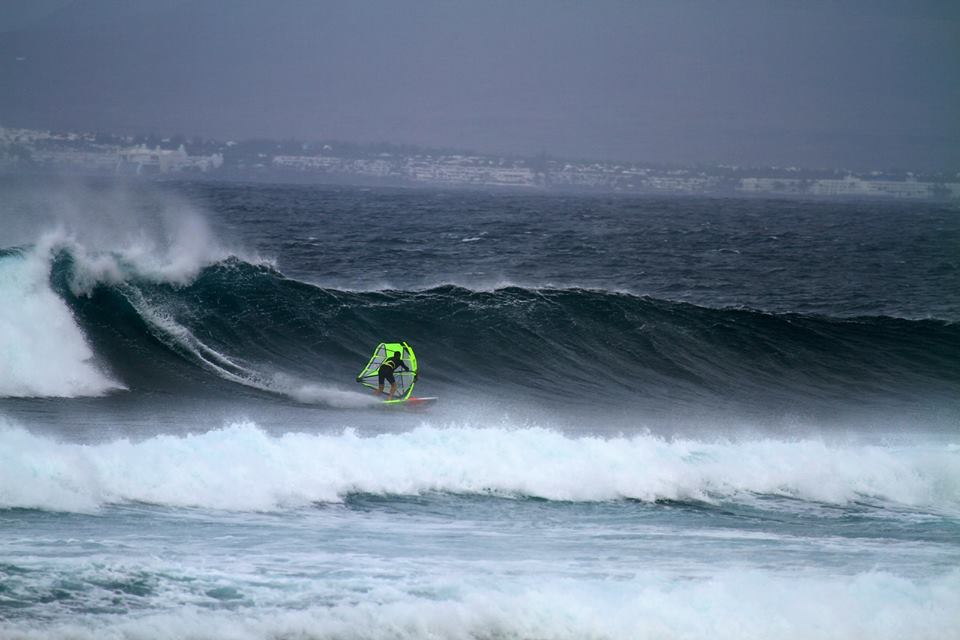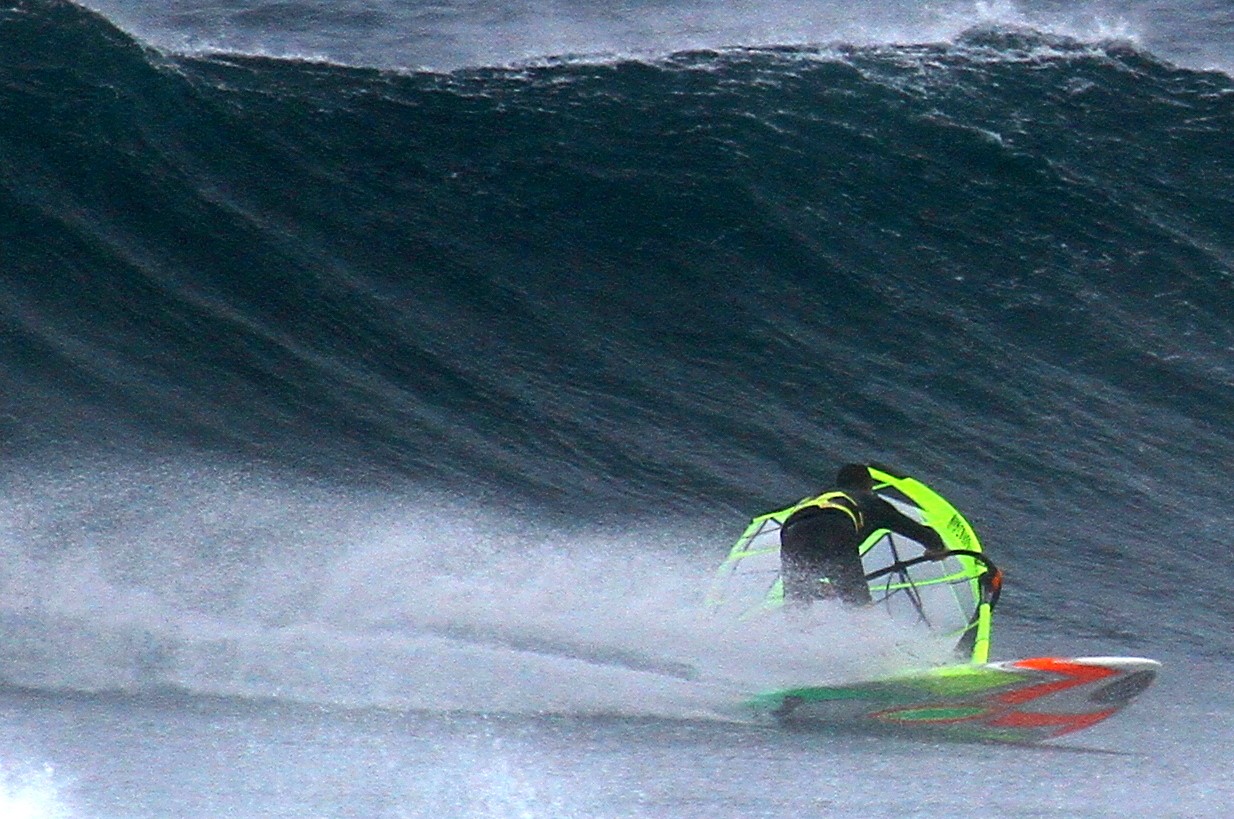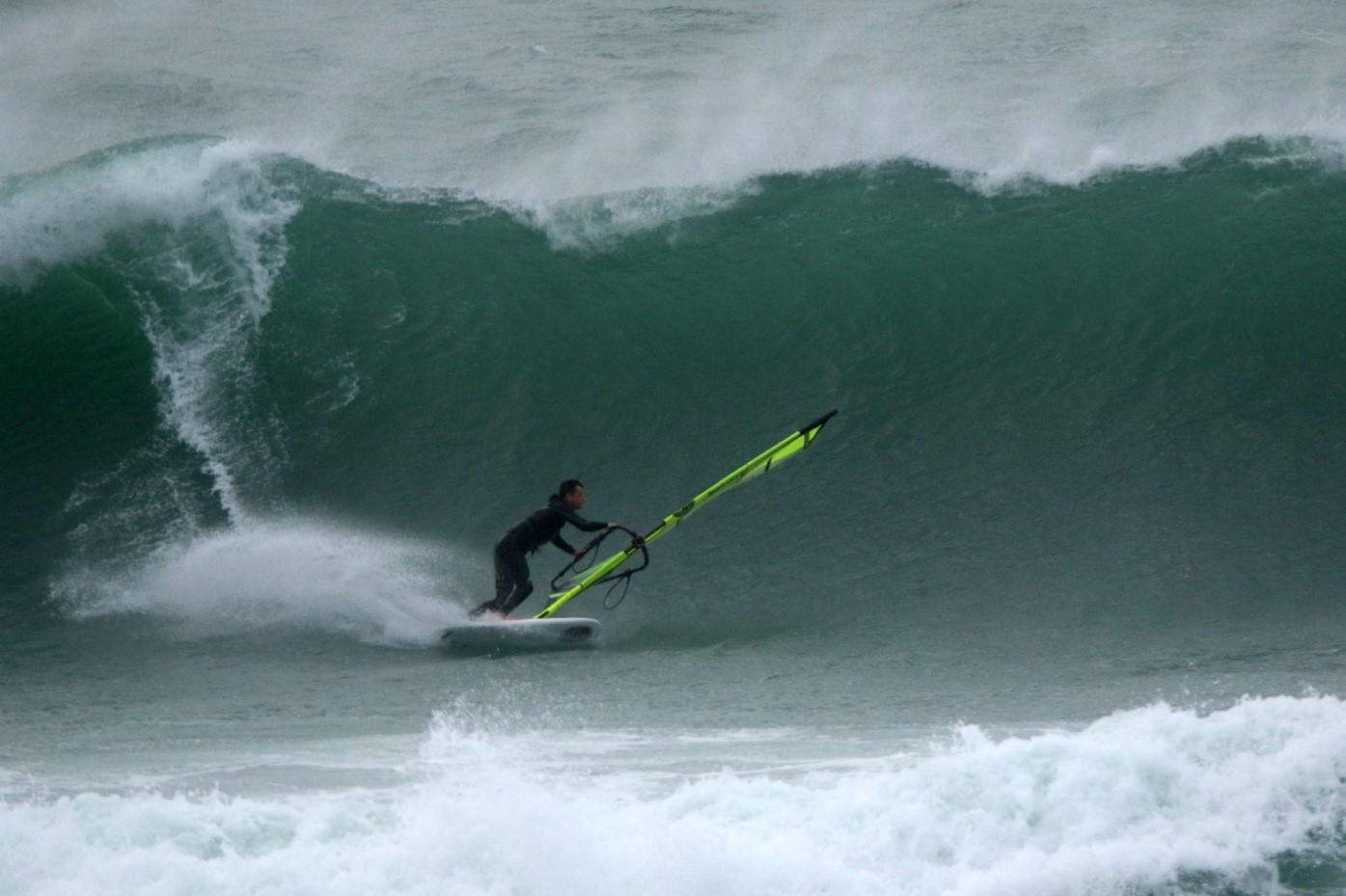We hear the term ‘drive’ being used regularly but what does it actually mean?
The term comes from the surfing world and is usually referred to how well a board keeps speed in a turn. This is of course very important in surfing with only the wave propelling the board but also in windsurfing it is definitely noticeable how much drive a board has. When we ride waves and there is less power from the elements available. But how can we accelerate in a turn when a turn should cost energy? There are various ways, first of all, the shape has an influence, the easier a board turns, the less energy we lose. Also, the more positive a board turns, the less energy we lose. Eh? OK, a board turns basically because of 2 movements: A positive movement when the nose moving towards the centre of a turn and a negative movement with the tail moving out of the turn also called tail slip. The more we can let the nose turn into the turn and therefore needs less tail slip, the less energy we lose. We can achieve this by more rocker on the rail and a sharper rail in the back half of the board. Because of the pressure, we apply to the water under the board, from about halfway down the board, the water will start moving outwards in relation to the centre line so a sharper rail loses less energy (it also helps to plane earlier and point higher).
A sharper rail does not harm the turning but actually helps to enter the turn and then, when the forward rocker is engaged to push the nose into the turn, prevents energy loss. Our Wave V3, 4 and 5 have been developed to do this extremely well.
Then the second and most important part that creates drive is the fins. And there are 2 ways to make fins give more drive.
The first way is through toe-in. Our side fins are toe-ed in. Meaning the side fins are not parallel with the centre line but are put under an angle pointing towards the nose. And because of the water flow moving out the most directly under the board, the angle is the biggest directly at the bottom and reduces from there towards the tip. First of all, this makes that the fins are “neutral” when going down a wave without any sideways sail pressure. When a fin is neutral, it is easiest to enter a turn as a fin´s lift increases with the angle of attack (AoA) so early in the turn there is not much AoA and it is easier to push into the turn. Then when we get to turn harder, the outside fin ventilates or completely leaves the water, so it stops working. Here a computer screenshot from a CFD simulation of a bottom turn where the board is halfway banked over and we see the outer fin is starting to ventilate:
And here the same in real life:
Note the water ‘horizon’.
And here in real life when the board is banked over more and the fin is completely out:
The inner fin then has less AoA to the water flow, allowing for more tail slip in a controlled way and reduced drag. On top that, when you push hard on the fin, the toe angle results in a forward component in the lift, very much like how a sail works. See image below.
The second way a fin can give drive is through twist. Be aware, flex is not the same as twist. A fin that flexes does not necessarily twist. Flex converts into twist if the fin is swept back. Similar to how toe-in provides drive, the twisting part of the fin gives a forward component in the lift it creates. This is also how swim fins work. See image below. Twist also gives control and predictability. When the AoA increases in a hard turn, the fin tip will twist with the water flow, preventing a sudden detachment of flow, causing a loss of grip.
Here you can see how a pretty stiff carbon side fin flexes in a soft top turn compared to sailing in a straight line:
A diagram on how fins create drive:
As you can see there are 3 points where a forward force is generated: One from the centre fin from the twisting tip and two from the side fin: from the toe-in angle and from the twisting tip. So with fins like this, the bigger the side fin, the more grip and forward drive. And another side effect is that as the side fins allow for more tail slip thus tighter turning, the front rail is also easier to dig in and keep grip in hard turns:












